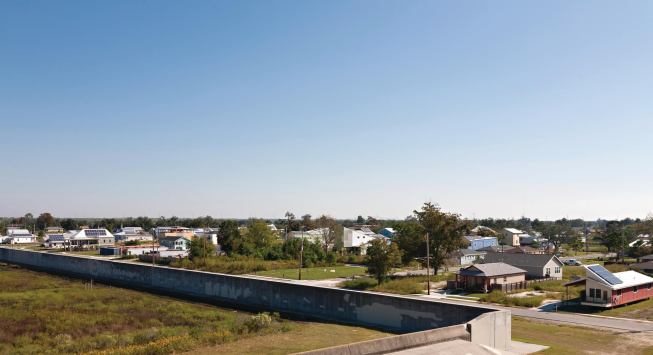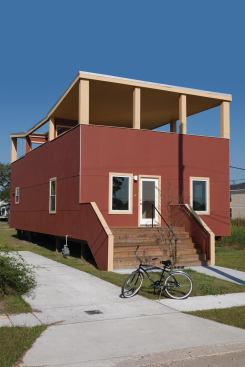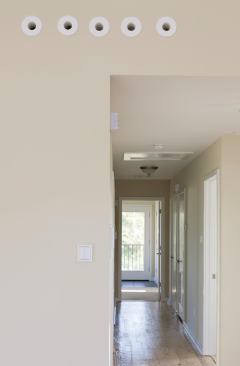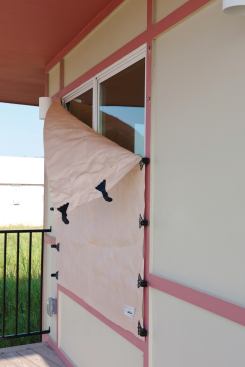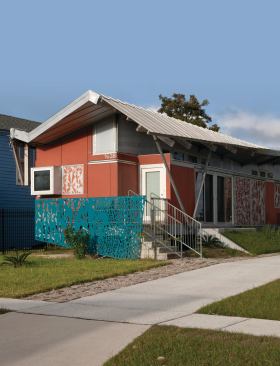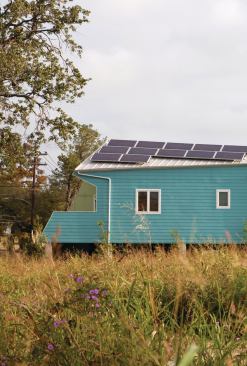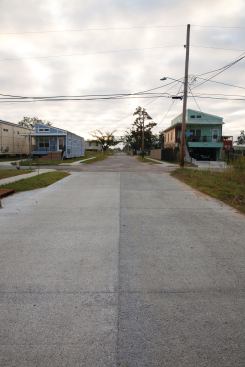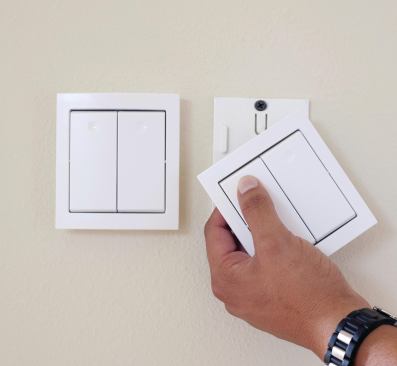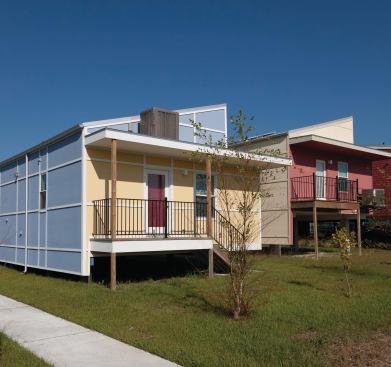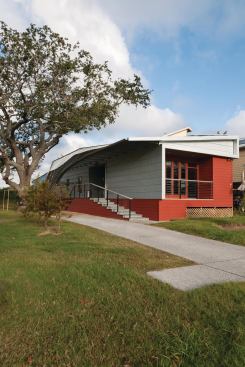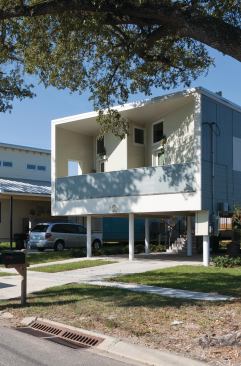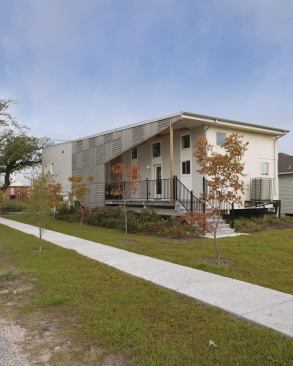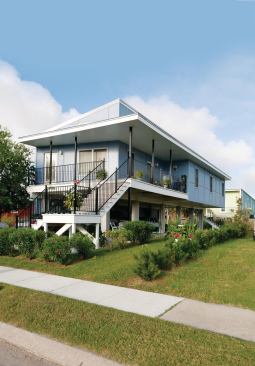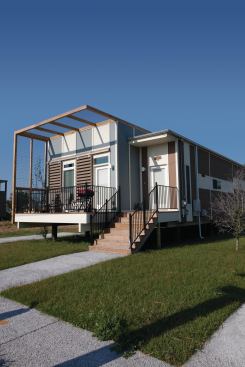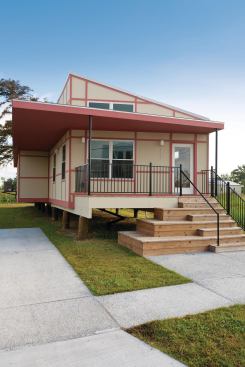Sara Essex Bradley
Triumph From Tragedy As of mid-2011, Make It Right has built 75…
Cesar Rodriguez, the product coordinator for Make It Right, shows me a map. “All of the ones in red are houses that didn’t survive the flood,” he says. The 16-block area identified by MIR for its rebuilding effort is almost all red.
But now, six years after Katrina and three years since Make It Right (MIR) built its first six prototypes, homes have returned—different, but better and safer. To date, 75 of the 150 single-family and duplex units MIR plans to build here are up and occupied. It’s a critical mass in a relatively small footprint that already, only halfway to goal, looks and feels like a neighborhood.
“It was important to stay in that area to generate some momentum, create neighborhood cohesiveness, and inspire more rebuilding,” CEO Tom Darden says. “We won’t match the original density of the Lower Ninth, but we’re already more dense than the rest of it right now.”
Restoring a neighborhood is different than developing a new one. Sure, the Lower Ninth Ward after Katrina was by some definitions a brownfield parcel ripe for redevelopment (and some civic leaders lobbied to leave it as open space), except for one thing: the people who owned homes there before still owned the property on which their homes used to sit, and a good measure of them wanted to return and rebuild.
Make It Right made it easier for returning residents, if not necessarily easier on themselves. The foundation sought out residents, some displaced as far as Seattle, to gauge their interest in coming back; those that wanted to return would have an opportunity to buy a MIR house of their choice for their lot, while others could sell their lots to make them available to other returning residents. Or, they could do neither and rebuild at their own pace with another builder.
“Assembling land like that has been a challenge,” Darden says, in terms of finding, communicating with, and qualifying potential buyers. “We needed a critical mass of buyers to make it work, but only if they lived in the neighborhood before Katrina.”
The foundation’s policy to limit sales to existing Lower Ninth residents displaced by the flood came from its primary desire to restore the neighborhood for those who lived there as much as possible, rather than offer new homes to anyone.
To facilitate its case-by-case approach, MIR developed a vertically integrated structure that found and contacted homeowners, educated them about the program, and offered forgivable loans to bridge what buyers brought to the table—at least half of the average $150,000 price tag, though not more than 30% of their income, from a variety of public and private sources.
MIR also walked buyers through the floor plan and finish selection process, qualified and supervised a team of nine general contractors during construction, procured all building materials to leverage volume discounts, and conducted classes prior to move-in that oriented owners to their new homes.
“Large-scale developers have a lot more pressure to streamline their processes and be more efficient with their decisions,” says MIR senior manager Pierre Moses. “But Make It Right was willing to take the time to engage the community and homeowners to deliver on its mission and maintain its standards.”
